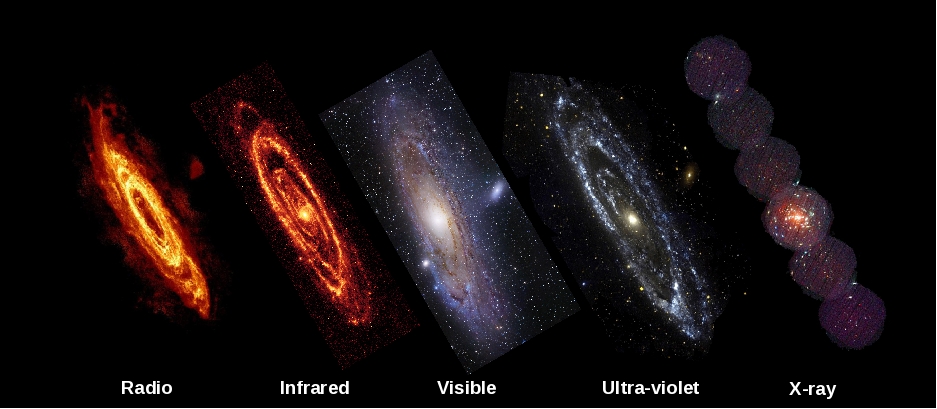What is Millimetre-wave Radiation
Light, or electromagnetic radiation, to give it its full title, covers much more that what we see with our eyes. Our eyes can see light with a wavelength of between 400 and 800 nanometres (a nanometre is a millionth of a millimetre), which is conveniently (though not coincidentally) around the same wavelength which the Sun emits in. However, there are many other types of radiation which we do not see. For example, infrared radiation has a slightly longer wavelength, and is emitted by objects at around room temperature, which is why it is often used for night-time cameras. The transparency or opaqueness of an object can depend on the wavelength used as well. For example, human skin and flesh is pretty transparent to X-rays, but bones are not. In modern airport security devices, submillimetre radiation (with a wavelength of 0.1–1 mm) is used, as it passes (harmlessly) through clothes and skin, but not through harder objects which may be hidden. Radiation with a wavelength of around 10 cm can be used to heat up food, and has been used in microwave ovens for the past 50 years or so.
The electromagnetic spectrum, showing the size scale of the wavelengths and the corresponding characteristic temperature, or “black body temperature”. The wavelengths bands that Planck looks at are shown as red vertical bars. Image credit: Chris North, Cardiff University. Click here, or on the image, for a larger version.
Multi-wavelength Astronomy
In astronomy, radiation from the whole spectrum is emitted by a whole host of objects. The wavelength of the radiation tends to be longer for colder objects, and shorter for hotter objects. So the cold dust between the stars emits light at relatively long wavelengths, while the very hot, active centres of galaxies emit X-rays. Below are images of our nearest large galactic neighbour, the Andromeda Galaxy, at several different wavelengths. At radio wavelengths we measure the gas in the outskirts of the galaxy, while at infrared wavelengths we measure the dust between the spiral arms. The stars making up the spiral arms and central bulge are seen at visible wavelengths, while in the ultraviolet we see just the brighter, hotter younger stars along the edges of the spiral arms. The X-ray image shows only the most energetic regions of the galaxy, particularly near the centre.

Our own Milky Way also looks very different at the different wavelengths, though we see always see it edge-on, rather than at a slight angle as with the Andomeda Galaxy. Maps of it can be seen here.
